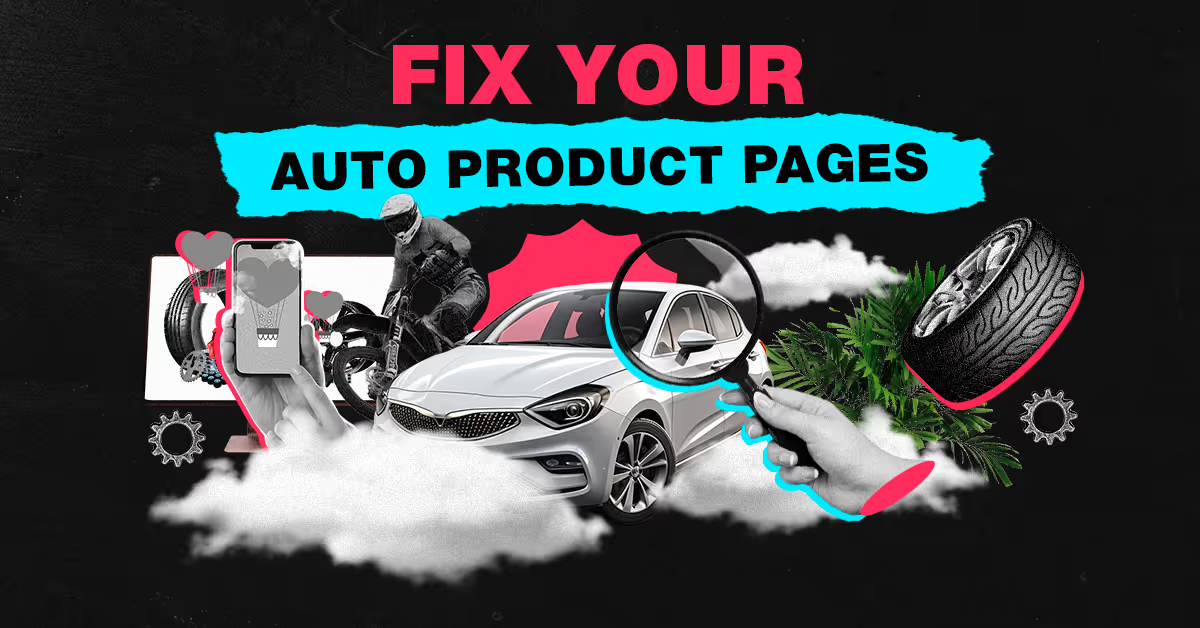
Auto parts ecommerce presents unique challenges and opportunities. I've spent years helping parts retailers turn browsers into buyers, and one thing remains constant: your product pages are where the magic happens – or doesn't.
The numbers tell a sobering story. The automotive industry averages just a 2.0% conversion rate, though top performers can reach an impressive 16%. (Source: Ruler Analytics)
That massive gap between average and top performers isn't accidental. It's the result of strategic product page optimization – something many auto parts retailers overlook in favor of driving more traffic.
In this guide, I'll share practical, proven strategies to transform your auto parts product pages into conversion engines. Let's turn those technical specs and part numbers into actual sales.
The auto parts market operates differently than most ecommerce sectors. Parts compatibility, fitment guarantees, and technical specifications create unique conversion challenges.
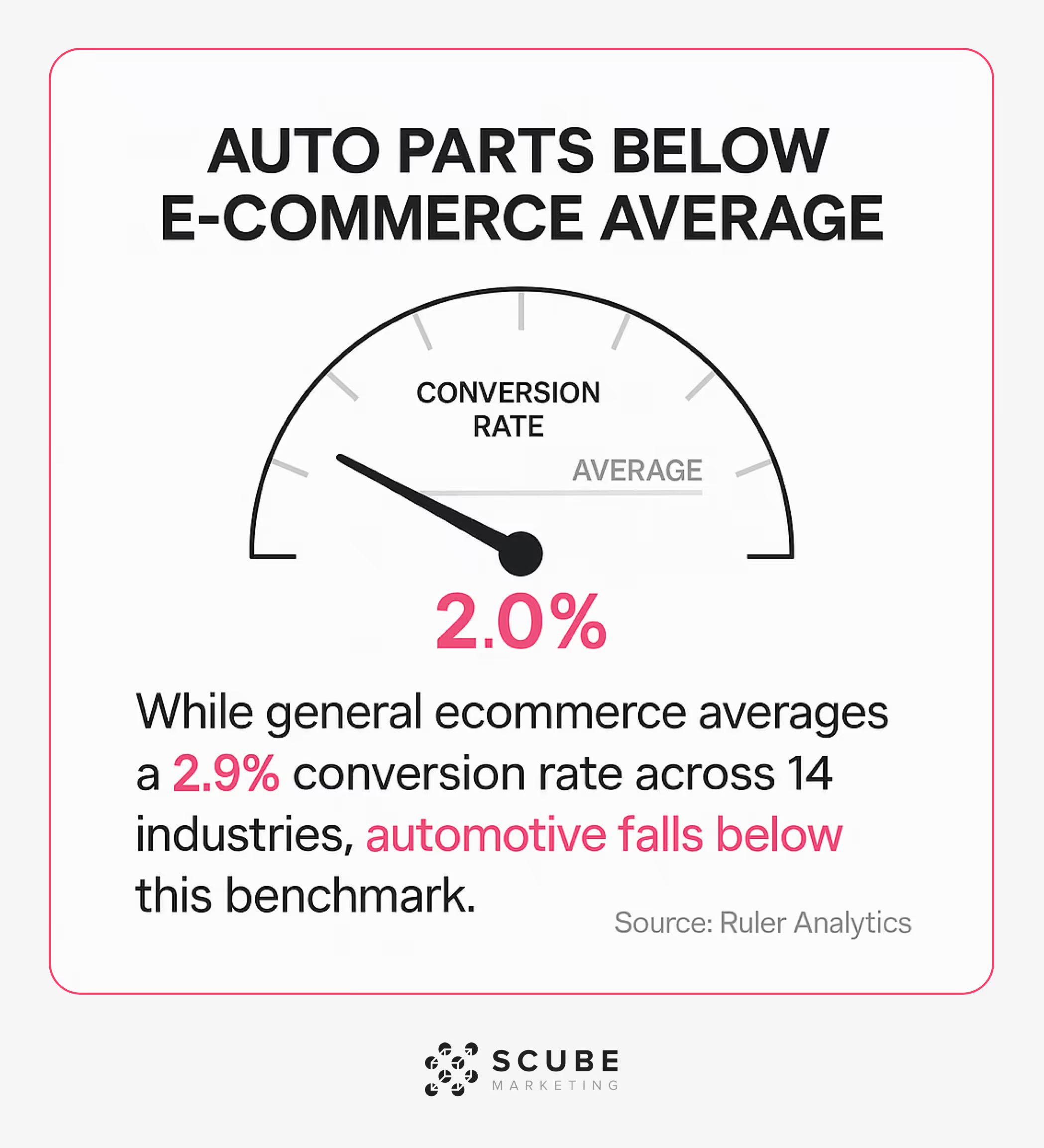
While general ecommerce averages a 2.9% conversion rate across 14 industries, automotive falls below this benchmark. (Source: Ruler Analytics)
Two main factors contribute to this gap. First, auto parts shoppers need absolute certainty about compatibility before purchasing. Second, many customers research online but complete purchases offline, creating attribution challenges.
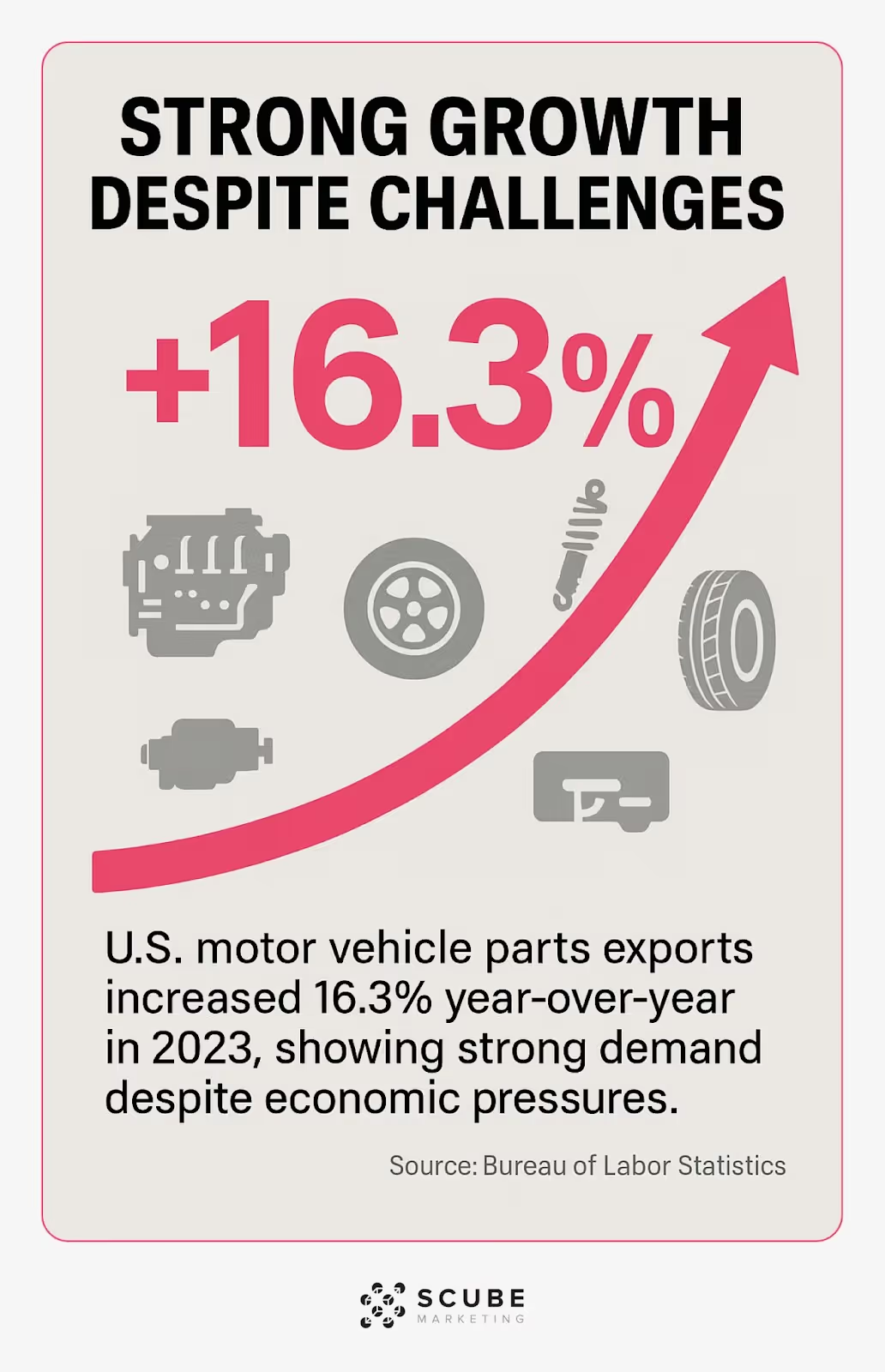
The market itself continues to grow. U.S. motor vehicle parts exports increased 16.3% year-over-year in 2023, showing strong demand despite economic pressures. (Source: Bureau of Labor Statistics)
Understanding these behaviors helps explain why optimization matters so much in this industry. When how can you effectively sell auto parts online while standing out from competitors? The key starts with optimized product pages.
Creating product pages that convert requires several key elements working together. I've tested countless variations across automotive clients, and these five components consistently drive results.
Auto parts shoppers need answers to specific technical questions. Will this part fit my vehicle? Is it OEM or aftermarket? What material is it made from?
The best product pages answer these questions immediately and clearly. Vehicle compatibility checkers should appear prominently near the top of the page, not buried below the fold.
Technical specifications should be formatted for easy scanning. Most users don't read entire product descriptions – they scan for the specific information they need.
The concept of building a successful aftermarket auto parts ecommerce business relies heavily on providing these specifications clearly and accurately.
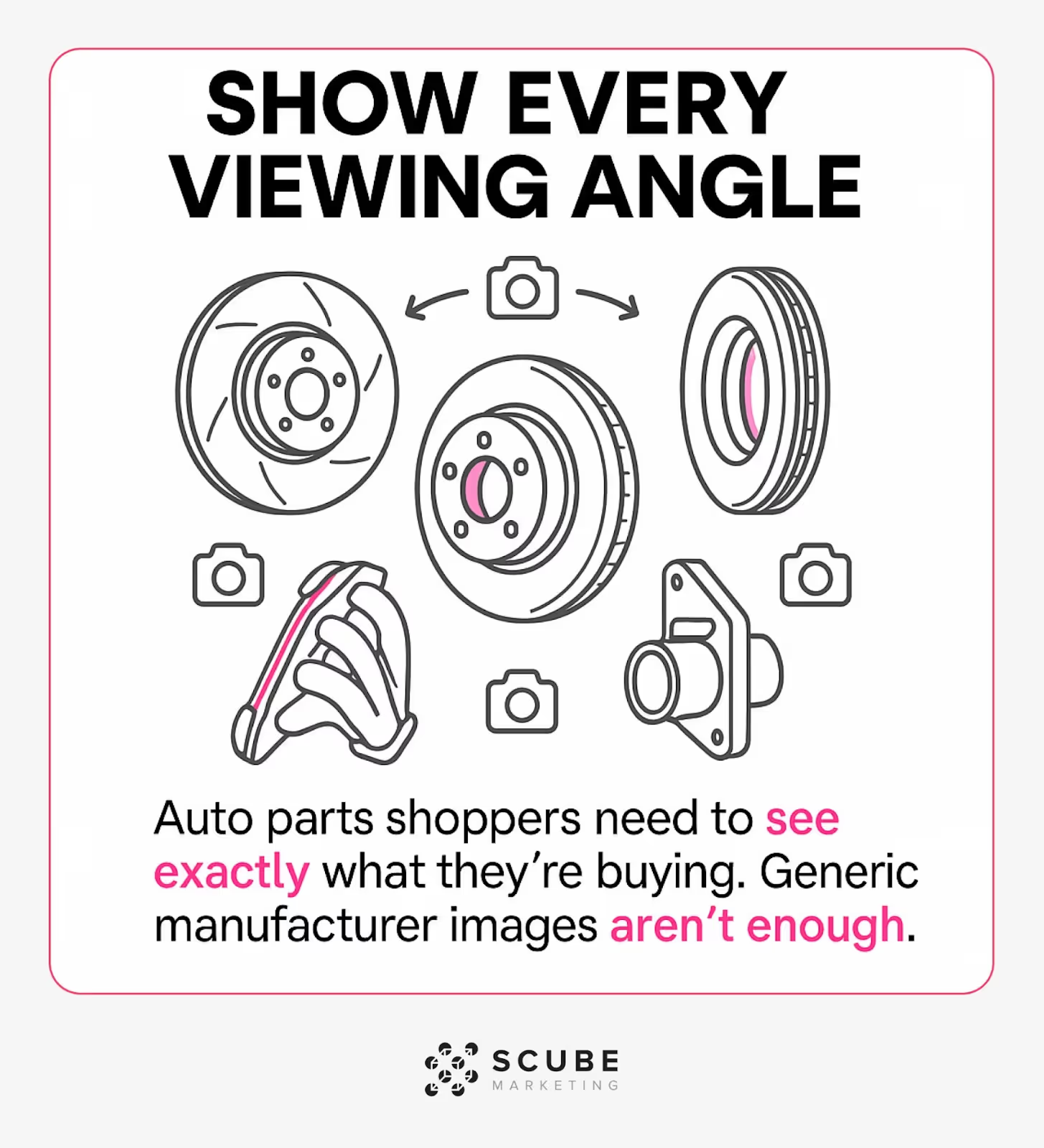
Auto parts shoppers need to see exactly what they're buying. Generic manufacturer images aren't enough. Top-converting product pages feature:
Visual content builds confidence. When customers can closely examine a part, they're more likely to trust its quality and compatibility.
Product descriptions should balance technical accuracy with usability. The best approach combines scannable bullet points for specifications with narrative descriptions of benefits and use cases.
When writing descriptions, focus on three key elements:
The readability of your product pages significantly impacts conversion rates. Break up dense technical information with subheadings, bullet points, and short paragraphs.
For auto parts, reviews serve a dual purpose. They build trust and provide valuable technical information from real users.
The most effective review implementations include:
Encourage customers to specify which vehicle they installed the part on. This creates valuable user-generated compatibility information that supplements your official fitment data.
Price sensitivity remains high in auto parts. Producer prices rose 11.3% cumulatively from 2020–2023, making clear pricing more important than ever. (Source: Bureau of Labor Statistics)
Transparency about all costs – including shipping, taxes, and any core charges – builds trust. Hidden fees at checkout are conversion killers.
When setting up your automotive ecommerce store, having the right inventory management software is crucial for maintaining accurate pricing and stock information.
Even perfect content won't convert if your site performs poorly. Technical optimization creates the foundation for conversion success.
Mobile shopping continues growing in auto parts ecommerce. Many DIY mechanics and professionals browse parts while in the garage or under the hood.
Mobile optimization for auto parts requires special attention to:
Test your mobile experience thoroughly. What works well on desktop often breaks down on smaller screens.
Speed directly impacts conversions. Auto parts pages face particular challenges due to multiple high-resolution images and complex compatibility databases.
Key speed optimizations include:
With proper analytics implementation being critical for measuring performance, auto parts retailers must track how speed improvements affect conversion rates.
Structured data helps search engines understand your product information. For auto parts, this creates better search results and potentially rich results showing compatibility information.
Implement Product schema with these automotive-specific properties:
This helps both search engines and potential aggregators better understand your parts data.
Auto parts catalogs are inherently complex. Clear navigation paths help users find exactly what they need without frustration.
Effective navigation strategies include:
At Scube Marketing, we specialize in helping automotive and motorsports businesses create navigation systems that match how their customers actually shop.
Content strategy for auto parts product pages requires balancing technical detail with usability. The goal is to answer every possible question a buyer might have before they need to ask it.
The compatibility checker is often the first element users interact with. Its effectiveness directly impacts conversion rates.
The best implementations include:
Make compatibility results unmistakably clear. Use strong visual indicators (green checkmarks, red X's) to show whether a part fits.
Video content serves multiple purposes on auto parts product pages:
Keep videos concise and focused on answering specific questions. A 2-minute installation overview often converts better than a 10-minute comprehensive guide.
Auto parts are rarely purchased in isolation. Most repair or upgrade projects require multiple components.
Effective cross-selling strategies include:
This approach not only increases average order value but also improves customer satisfaction by ensuring they have everything needed to complete their project.
Detailed technical content reduces uncertainty and builds purchase confidence. Include:
This information helps customers evaluate whether they can successfully install the part, reducing return rates and improving satisfaction.
Beyond page elements, specific conversion tactics can dramatically improve auto parts sales performance.
The primary CTA (Add to Cart/Buy Now) should remain visible throughout the product page experience. Consider:
Test button text variations. In some cases, specific language like "Add to My 2018 Honda Civic" can outperform generic "Add to Cart" buttons.
Cart abandonment often happens during checkout. Streamline this critical path:
Consider offering specialized services like shop delivery for professional mechanics. This convenience factor can differentiate your store from competitors.
Auto parts purchases often involve significant investment. Trust indicators help overcome purchase hesitation:
Position these elements near points of decision-making – especially around the add-to-cart button and during checkout.
Cart abandonment in auto parts ecommerce often happens for specific reasons:
Tailor recovery emails to address these specific concerns. Include compatibility confirmations, price guarantees, and technical support offers in your recovery sequences.
Continuous improvement requires consistent measurement. For auto parts product pages, track these specific metrics:
Beyond basic conversion rate, these metrics provide deeper insights:
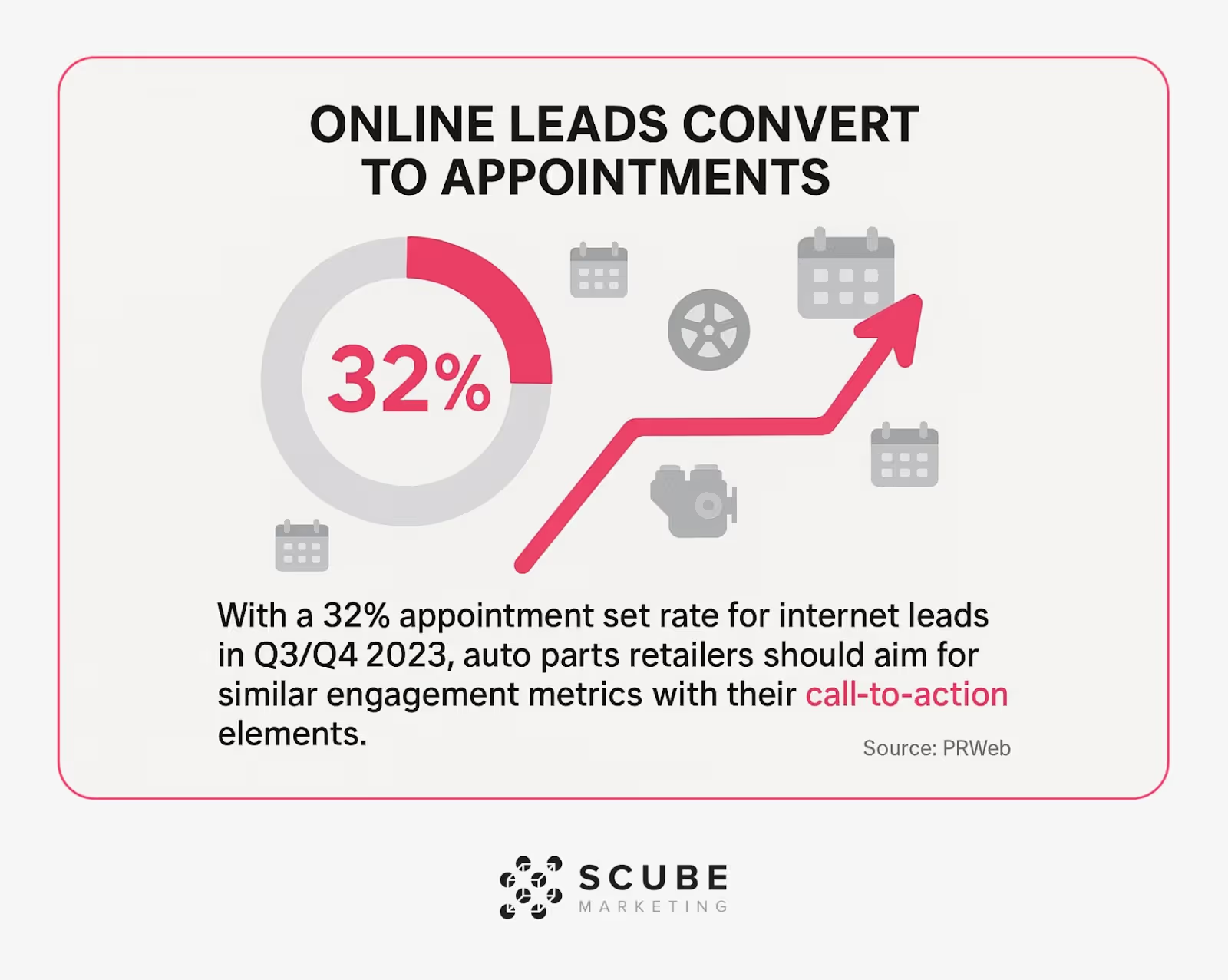
Dealership appointment rates provide a useful benchmark for online-to-offline conversion. With a 32% appointment set rate for internet leads in Q3/Q4 2023, auto parts retailers should aim for similar engagement metrics with their call-to-action elements. (Source: PRWeb)
Test these high-impact elements on auto parts product pages:
Start with testing elements that directly impact your primary conversion challenges. If compatibility uncertainty is your biggest issue, focus first on optimizing that experience.
Quantitative data tells what's happening, but qualitative research reveals why. Consider implementing:
Look for patterns in how users navigate between vehicle selection, specifications, images, and purchasing actions. This reveals their decision-making process.
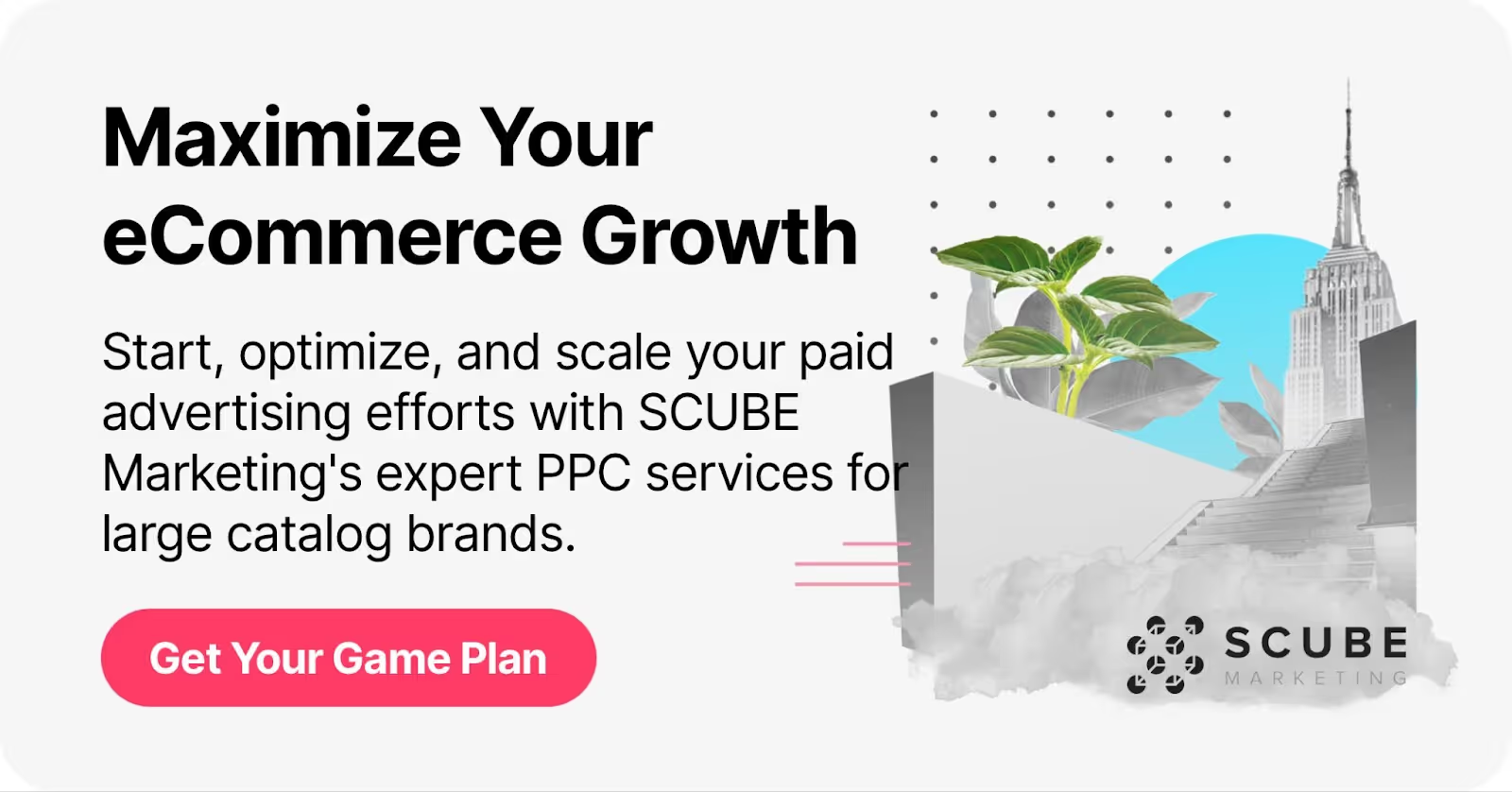
Optimizing auto parts product pages isn't a one-time project but an ongoing process of improvement. The strategies outlined here provide a framework for increasing your conversion rates beyond the industry average.
Remember that the 14% gap between average and top-performing conversion rates represents significant revenue potential. Even incremental improvements compound over time.
Start by addressing the most critical elements: compatibility checking, product visualization, and technical content clarity. Then move to testing additional enhancements based on your specific customer needs.
Looking for personalized guidance for your auto parts ecommerce store? Check out our guide to automotive inventory software or reach out for a consultation on optimizing your specific product pages.
The road to higher conversions starts with understanding your customers' needs and removing every obstacle between them and a confident purchase decision.